Fresh Basil Pesto Sauce
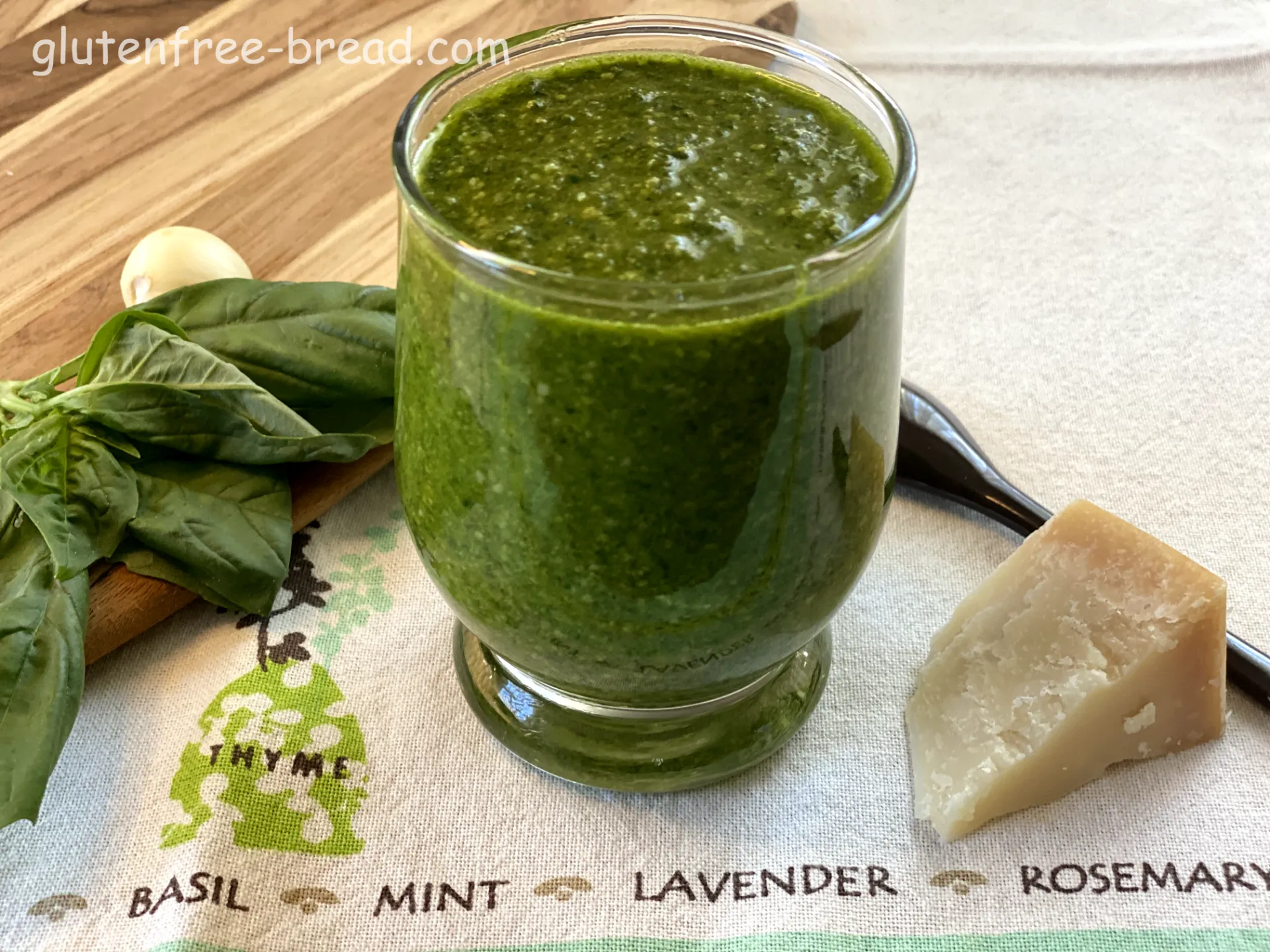
Ingredients:
| Name | Metric | US | TIP | |
|---|---|---|---|---|
| Unsalted Nuts | 35 gr | 1/4 cup | ||
| Parmesan cheese, freshly grated | 25 gr | 1/4 cup | ||
| Fresh Basil Leaves, loosely packed | 120 gr | 4 cups | ||
| Salt, or to taste | 3 gr | 1/2 teaspoon | ||
| Garlic, finely minced | 2 cloves | 1 teaspoon | ||
| Extra Virgin Olive Oil | 120 ml | 1/2 cup |
Equipment:
| Food processor |
Steps:
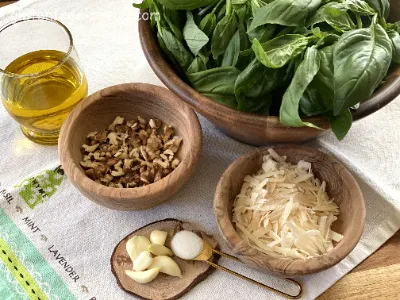
Step 1

Step 2
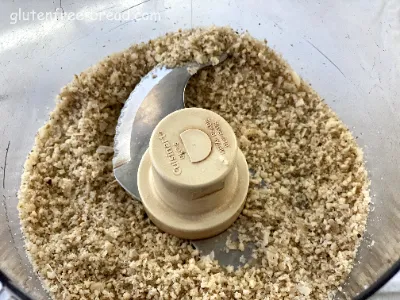
Step 3
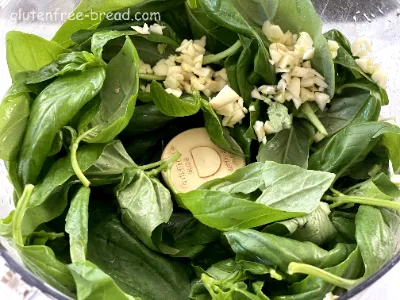
Step 4

Step 5
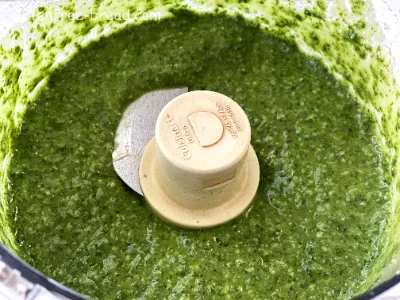
Step 6
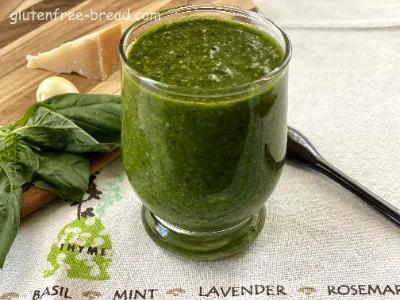
Step 7
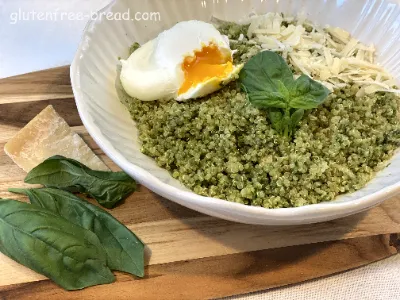
Step 8
Notes:

Fresh Basil Pesto Sauce
Refrigeration: Fresh basil pesto can be stored in a sealed container in the refrigerator for up to one week. Prevent Oxidation: To keep the pesto vibrant and green, drizzle a bit more olive oil over the surface each time you use it. This helps prevent the basil from turning brown. Doubling the Recipe: If you're making a larger batch, consider making the pesto in smaller batches (especially if your food processor isn’t large enough to handle a double or triple recipe). Freezing Pesto: Pesto freezes well for up to two months. Portion it into plastic freezer bags, silicone storage bags, or small glass jars. To thaw, you can leave it at room temperature, place it in the fridge overnight, or immerse the container in hot water to speed up the process. Choosing the Nuts: You can use walnuts, pine nuts, almonds, or pistachios for your pesto. Make sure the nuts are unsalted. It’s a good idea to taste them before blending to ensure they’re fresh, as nuts can become rancid if not stored properly. Enhancing Flavor: For extra depth, consider toasting the nuts at 350°F (175°C) for about 10 minutes. Let them cool to room temperature before proceeding with the recipe.
Fresh Basil Pesto Sauce additional information:
Basil pesto is not only delicious but also packed with nutritional benefits due to its wholesome ingredients. Here's a breakdown of the key health benefits of each component in traditional basil pesto:
1. Fresh Basil
- Rich in Vitamins and Antioxidants: Basil is a great source of vitamin K, which is important for bone health and blood clotting. It also provides vitamin A (from beta-carotene), supporting eye health and immune function. Additionally, basil contains antioxidants like flavonoids and polyphenols, which help reduce inflammation and protect against oxidative stress.
- Anti-inflammatory Properties: Basil has natural anti-inflammatory compounds that may help reduce the risk of chronic diseases like heart disease, diabetes, and arthritis.
2. Nuts (Walnuts, Pine Nuts, Almonds, Pistachios)
- Healthy Fats: Nuts are rich in unsaturated fats, particularly omega-3 fatty acids (in walnuts) and monounsaturated fats (in almonds and pistachios), which support heart health by lowering LDL cholesterol and reducing the risk of heart disease.
- Protein: Nuts are also a good source of plant-based protein, helping to build and repair tissues, and supporting muscle health.
- Fiber: Nuts are high in fiber, which aids in digestion, promotes gut health, and helps maintain stable blood sugar levels.
- Antioxidants and Vitamins: Nuts contain essential nutrients like vitamin E, a powerful antioxidant that supports skin health and protects against cell damage, and magnesium, which is important for bone health and muscle function.
3. Parmesan or Pecorino Cheese
- Calcium and Protein: Parmesan cheese is a great source of calcium, essential for strong bones and teeth. It also provides protein, which is important for muscle repair and overall growth.
- B Vitamins: Parmesan contains B vitamins like B12, which support brain function, energy production, and the nervous system.
4. Olive Oil
- Heart-Healthy Fats: Olive oil is rich in monounsaturated fats, particularly oleic acid, which has been shown to reduce inflammation and lower the risk of heart disease.
- Antioxidants: Extra virgin olive oil is loaded with antioxidants like vitamin E and polyphenols, which protect cells from damage, reduce oxidative stress, and improve overall health.
- Anti-inflammatory: Olive oil has natural anti-inflammatory properties that can help protect the body from chronic conditions like arthritis and cardiovascular disease.
5. Garlic
- Immune Support: Garlic is known for its immune-boosting properties. It contains compounds like allicin, which may help fight off infections and support overall immune function.
- Heart Health: Garlic has been shown to lower blood pressure, reduce cholesterol, and improve circulation, all of which contribute to better heart health.
- Antioxidants: Garlic is rich in antioxidants, which help reduce inflammation and protect against chronic diseases.
Health Benefits of Basil Pesto Overall:
- Heart Health: The combination of healthy fats from olive oil and nuts, along with the anti-inflammatory properties of basil and garlic, makes pesto a great addition to a heart-healthy diet.
- Bone and Immune Health: With its vitamin K, calcium, and antioxidants, pesto supports both bone strength and immune function.
- Digestive Health: The fiber in nuts and olive oil helps support digestive health and maintain steady blood sugar levels.
- Anti-inflammatory: All of the ingredients in pesto work together to reduce inflammation in the body, which is key to preventing chronic diseases like heart disease, arthritis, and cancer.







